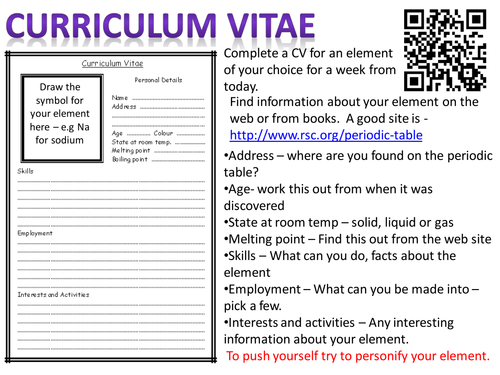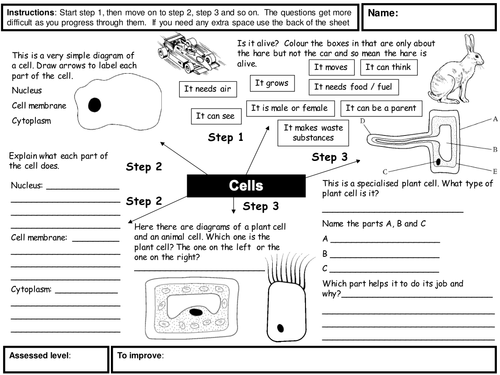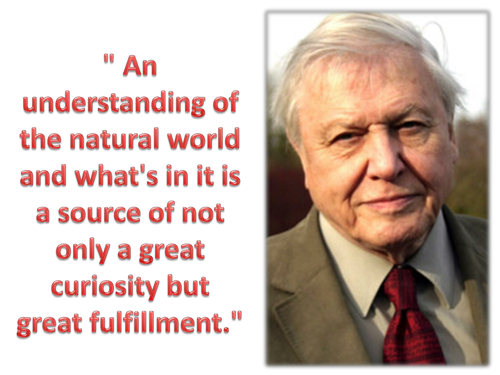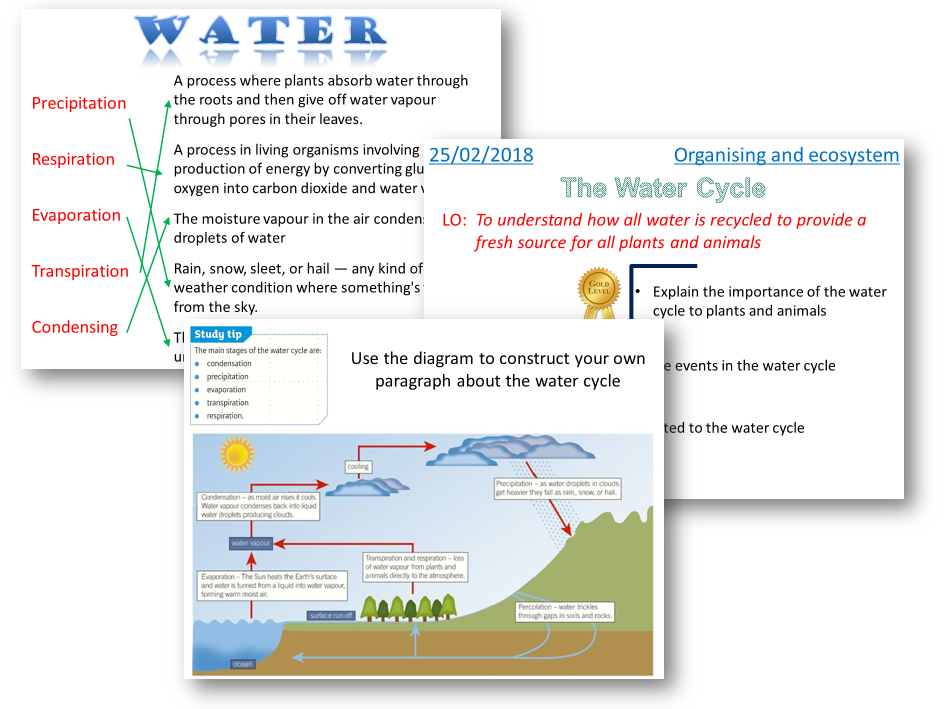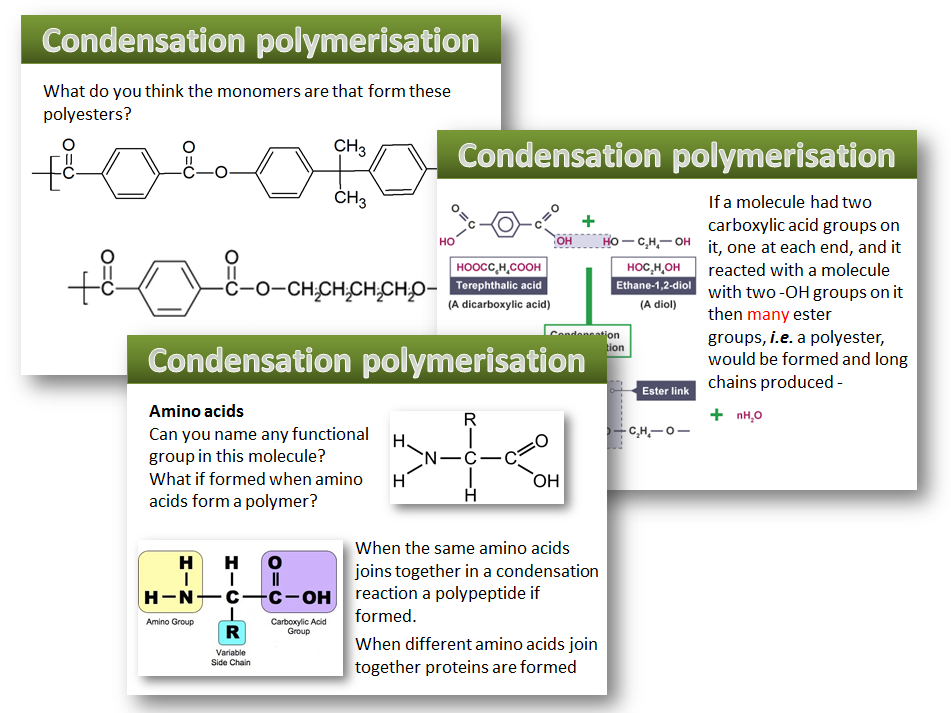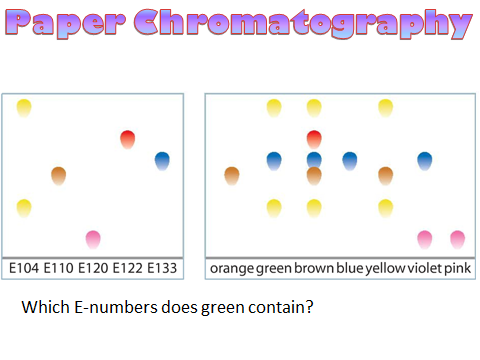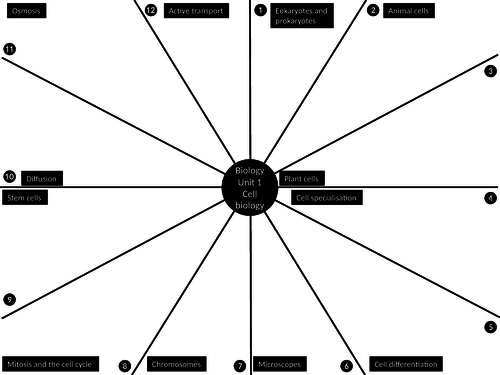
133Uploads
190k+Views
309k+Downloads
All resources

KS3 Biology homework tasks
Leveled tasks on various biology topics suitable for KS3. Each presentation has 3 slides. Slide 1 is the pupil sheet, slide 2 contains the mark scheme and slide 3 has suitable comments to use give a target on how to improve scientific knowledge.
Taken by an OFSTED inspector to give to a school as an example of good practice for a school in special measures

Element CV
A Literacy homework with research. Pupils are to create a CV for an element. The help sheet gives the web address and QR code for the RSC periodic table where the research can be carried out. To extend pupils you could get them to try and personify their element.

Cells Homework
A leveled task on cells suitable for KS3. The presentation has 3 slides. Slide 1 is the pupil sheet, slide 2 contains the mark scheme and slide 3 has suitable comments to use give a target on how to improve scientific knowledge.
This is a free sample. I have 10 more of these available in the same format for £3.00

AQA Chem / Trilogy - Evolution of the atmosphere
A presentation to teach the importance of evolution of algae and plants and the part played by the oceans in the development of the atmosphere. This is lesson three in the chemistry of the atmosphere unit for AQA, but can be taught as a stand alone lesson. Activities with answers are provided on the presentation.

AQA Chemistry / Trilogy - Carbon monoxide and Global dimming
A lesson to take pupils through the effects of carbon monoxide and global dimming. There are assessment opportunists within the presentation and a worksheet on the the cause and effect of global dimming. This is the 9 lesson in the series for the AQA unit on Chemistry of the atmosphere, but it can be taught as a stand alone lesson

Energy Changes in Chemical Reactions
The third lesson in a series of 4 for the C5 topic - Energy Changes. Simple energy level diagrams are introduced and the concept of braking bonds being and endothermic process and making bonds an exothermic process is discussed. The idea of why a reaction eventually is exo or endo is then considered. A fully resourced lesson that can be taught stand alone

AQA Chemistry / Trilogy - Acid rain
A fully resourced lesson about acid rain, including a practical to test how acid rain affects building materials. The presentation takes pupils through the definition, cause, effect and solutions. There are assessment opportunities supplied. This is lesson 8 in the AQA Chemistry of the atmosphere unit, but can be taught as a stand alone lesson

Climate change and global warming
A presentation and resources to teach the difference between global warming and climate change and to consider the consequences of climate change. Lesson 5 on the AQA unit for Chemistry of the atmosphere, but can be taught as a stand alone lesson

The Water Cycle - AQA 2016 Biology
A presentation and differentiated worksheets to teach the water cycle and get pupil to complete an extended piece of written work on the water cycle. I have included various versions of the work sheet, depending on how you wish to teach the topic - Word and PDF versions.
The keywords are defined and there is a matching keywords to definitions task plus links to a YouTube video
This resource is also available as part of a bundle
Bundle

AQA - Chemistry of the atmosphere
9 lessons to take students through the syllabus requirements for the chemistry of the atmosphere unit if studying for the trilogy exams or chemistry exams.

Condensation polymerisation
A presentation with questions linked to the Organic Chemistry unit of the new AQA 1-9 course. There are assessment opportunities and worksheets that can be printed from the PowerPoint

Chromatography theory and required practical - AQA Chemistry 2016
A presentation to deliver the theory of paper chromatography and demonstrate the correct procedure to carry out the required practical. A booklet is included that links to the presentation and theory. There are various activities included in the presentation. Enough material for at least 90 minutes of teaching time. The booklet also includes assessment questions.

Circuit diagrams and symbols
A lesson that covers the circuit symbols used in the AQA trilogy / physics course 2016, but could easily be adapted for any syllabus or KS3. There are assessment opportunities, practical activities and a worksheet included in the resource

Radiation and its uses - Summary
A revision mat on for the Trilogy AQA Physics radiation unit. Print out a blank copy of the summary sheet. Give pupils access to the internet of textbooks to try and find the answers. The answers are available for self / peer assessment by the end of the lesson.
Also a good homework activity to assist in revision before an end of unit test

Atomic Structure and radiation A3 summary sheet
A summary of atomic structure and radiation in a easily accessible fashion. Used with a low ability group and printed on A3 paper

AQA Chemistry / Trilogy - Gases in the atmosphere
A presentation with resources to introduce the unit on chemistry of the atmosphere. The idea of the changes in the atmosphere over time are introduced and present composition is discussed. Activities and answers, where appropriate, are included. This is the first in the series of lessons for the AQA unit on chemistry of the atmosphere, but it can be taught as a stand alone lesson

AQA Chemistry / Trilogy - Carbon Footprint
A fully resources lesson with PowerPoint, Worksheet, Assessment and Activity. The presentation discusses direct and indirect activities that add to a persons carbon footprint and some graphical analysis to compare different countries carbon footprint. Lesson 7 for the AQA chemistry of the atmosphere unit, but can be taught as a stand alone lesson.

Revision clocks - Biology Paper 1 - AQA Trilogy
The first 4 units of the Biology Paper 1 split into 12 sub sections. Pupils are to spend no more than 4/5 minutes on each section to try and ensure that the whole of a topic is covered.


